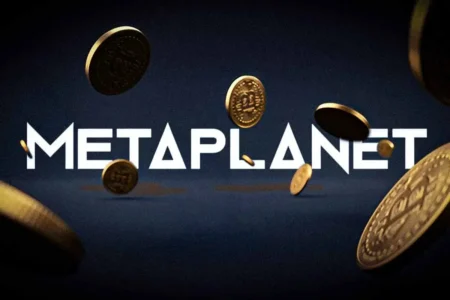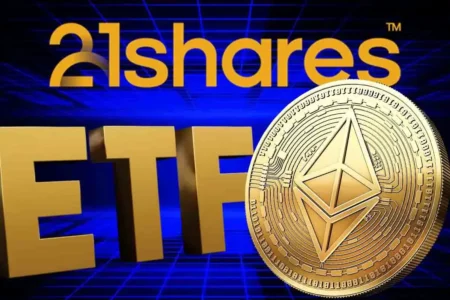Understanding the Bondex Token Crash: Causes and Implications
The launch of the Bondex (BDXN) token marked a significant moment in the cryptocurrency market, especially with its simultaneous listing on Binance, one of the world’s largest crypto exchanges. However, within minutes of its debut, the token experienced a catastrophic price drop of over 91%. This remarkable failure raises questions about what went wrong during this much-anticipated launch.
Bondex Token Launch and Initial Performance
The Bondex token was introduced with a listing price of $0.9219 on Binance, leading many investors to hope for a positive market response. However, shortly after its launch, BDXN plummeted to approximately $0.07767, resulting in a stark market capitalization of $12.42 million. This dramatic decline occurred despite an overwhelming increase in trading volume—up a staggering 6000%—which further highlights the disparity between investor enthusiasm and actual market behavior.
The initial airdrop distributed to Binance users possessing 212 alpha points, allowing them to claim 900 tokens, catalyzed a massive sell-off. In many similar cases, such actions often lead to profit-taking, resulting in rapid price declines that contradict initial bullish sentiment.
Factors Behind the Price Crash
A deeper analysis reveals that the price crash can be attributed to several interrelated factors. According to crypto analysts, the nature of Binance listings often results in a precarious environment for new tokens. A notable analyst, Gem Hunter, pointed out that many tokens exhibit a pattern of substantial price declines post-listing. Historical evidence suggests that tokens like ACT, DEXE, and KAVA have similarly suffered significant losses after appearing on the platform.
Investor behavior plays a critical role in this phenomenon, as excitement surrounding a new listing tends to drive initial price hikes. However, many investors are quick to capitalize on this temporary surge, leading to a large influx of selling that drives the price down.
Disappointment with Airdrop Allocations
Another significant contributor to the Bondex token crash was the widespread dissatisfaction stemming from the airdrop distribution. Investors expressed frustration over issues related to eligibility and allocation, prompting claims of potential scams. Such negative sentiment not only fueled further selling but also tarnished the reputation of the Bondex token from the outset.
When investors believe they have been wronged in a financial transaction, emotions often run high, leading to panic selling. This behavior can quickly spiral, as seen in the Bondex scenario, where disappointment directly influenced market actions and sentiment, resulting in a feedback loop that exacerbated price declines.
Implications for Future Listings
The Bondex disaster serves as an essential case study for both current and future crypto projects considering Binance listings. While being listed on such a prominent exchange can provide invaluable exposure and credibility, it also comes with inherent risks. Investors are becoming more cautious, and projects need to be proactive about managing expectations, particularly regarding airdrop distributions and tokenomics.
To avoid similar pitfalls, future projects may need to focus on transparent communication and realistic marketing strategies that keep investor sentiment in check. Ensuring that airdrop processes are seamless and fair could also play a pivotal role in mitigating negative sentiment induced by allocation issues.
Navigating the Post-Crash Environment
As of now, the Bondex token trades at approximately $0.07767, reflecting a staggering 91% decline from its initial offering. Despite the flurry of trading activity accompanying this drop, the overwhelming majority of transactions appear to be motivated by selling rather than acquiring ownership. For investors, this presents a difficult landscape: should they hold onto their BDXN tokens in hopes of a future rebound, or cut their losses and exit the market?
Investors are left in a precarious position, evaluating whether the fundamental value of the Bondex project justifies its current market price. Long-term viability may hinge on the team’s ability to rectify the issues associated with the airdrop and rebuild trust.
Conclusion: Lessons for Investors and Projects Alike
The Bondex token crash serves as a sobering reminder of the volatility and unpredictability inherent in the cryptocurrency market. It underscores the necessity for projects to approach launches with caution and for investors to conduct thorough research before engaging in such investments. As the crypto landscape continues to evolve, both parties must learn from examples like Bondex to navigate future opportunities more effectively.
Frequently Asked Questions (FAQs)
-
What caused the Bondex token crash?
- The crash was primarily driven by mass selling following the Binance listing and problematic airdrop distribution.
-
Why are users disappointed with the airdrop?
- Discontent stems from eligibility confusion and allocation issues, leading to accusations of scams.
- What is the current market status of Bondex?
- As of now, Bondex trades at approximately $0.07767 after a significant price drop, with a trading volume up considerably, indicating ongoing seller dominance.
Investors are encouraged to stay informed and approach future opportunities with a critical eye, ensuring that thorough research precedes any financial commitments.

















